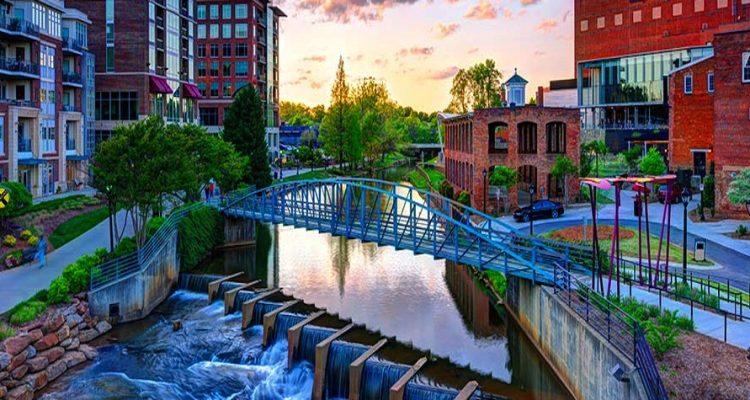In mid-September, Mayor Elliott and Jake Dougherty, Executive Director of Wheeling National Heritage Area Corporation (WNHAC), traveled to Greenville for a full itinerary, including tours and meetings with Knox White, Mayor of Greenville; Nancy Whitworth, Economic Development Director; Gaye Sprague, Councilwoman; Tripp Muldrow, consultant and former Greenville Planning Commissioner; and Curtis Brison, Wheeling native and Greenville resident. The following are his “lessons learned”:
With typical Glenn Elliott brevity, here’s a recap of my trip last week to Greenville, South Carolina. I would like to thank Susan James Hagan, Allison Skibo, and Janice Jones for working to coordinate my visit with Greenville city leaders. I would also like to thank Tripp Muldrow and Wheeling native Curtis Brison for being such wonderful hosts.
LESSONS FROM GREENVILLE
Pick up any book on urban design or downtown revitalization, and chances are you will find a chapter or two that highlights Greenville, South Carolina. In many respects, among medium-sized cities, Greenville represents the model for how to revitalize a city from the inside out by focusing on a struggling downtown core. I had read a lot about Greenville in recent years as I looked for solutions to many of the challenges we face in Wheeling, particularly in our downtown. But I had never visited this city of 65,000 nestled along the foothills of the Blue Ridge Mountains until last week, when I had the opportunity to visit Greenville along with Jake Dougherty, Executive Director the Wheeling National Heritage Area Corporation.
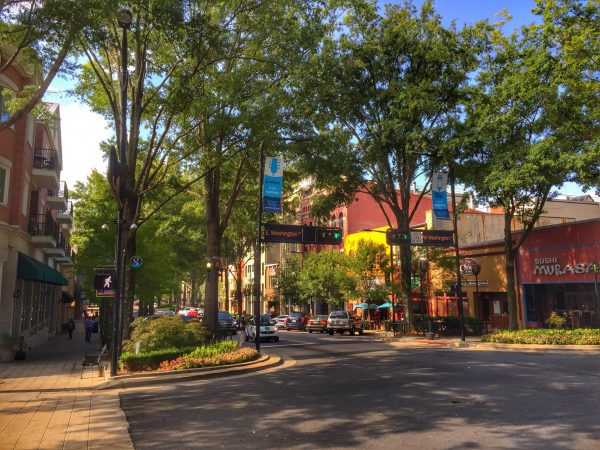
The purpose of our visit was simple:
(1) To meet with the Mayor and other city officials to discuss the strategies they have employed to guide the very intentional, very strategic revitalization that has taken place in Greenville over the past three decades; and
(2) To see firsthand the results of their efforts.
I am happy to report that the trip was a success, at least insofar as it was educational and informative for yours truly and for Mr. Dougherty. We were welcomed by Greenville city officials with open arms. Mayor Knox White (pictured along with Mr. Dougherty below), who is currently serving in his sixth consecutive term, gave us nearly two hours of his time. Nancy Whitworth, Director of the city’s Economic Development Department, walked us through countless lessons learned during her more than thirty years on the job overseeing Greenville’s revitalization. Councilwoman Gaye Sprague (who is a traffic engineer in her full-time job) gave us a useful history lesson on Greenville’s experiments with traffic and parking solutions. Former Greenville Planning Commissioner (and current consultant) Tripp Muldrow, along with Wheeling native and current Greenville resident Curtis Brison, took us on walking and driving tours around town spanning two days.

In short, this was time well spent, as it helps me put Wheeling’s current challenges and opportunities into better perspective. After all, in the early 1990s, it was Greenville’s downtown district that was defined by a few banks, a few law firms, and otherwise many vacant buildings, limited retail options, and virtually empty streets after 5:00 p.m. If that sounds familiar, it’s because those same attributes are used by many to describe Wheeling’s downtown today. Now, to be fair, no two cities are identical, and I am not suggesting that what has proven best for Greenville in prior decades is necessarily what’s best for Wheeling in 2016 and beyond. But there are parallels here that deserve to be further explored, and there is no shame in city leaders borrowing ideas from their peers in other cities that have had success tackling similar challenges. There is no copyright on smart municipal policy.
And with no further ado, I would like to share a few key takeaways from my Greenville experience, for no other purpose than continuing a conversation I have been having with Wheeling residents since I first began seeking this office last year. There are no magic bullets or shortcuts for revitalizing cities, nor is there any guarantee that even the smartest policies will yield success. Sometimes, luck—whether good or bad—plays a role too. But at the same time there are no cities I am aware of that became great by accident or by solving problems on an ad hoc basis without any overarching strategy or plan. The strategies discussed below were all part of an intentional, deliberate plan set in motion, followed (with some tweaking) over decades by Greenville city officials.

1. Focus On Design/Aesthetics.
Walking through downtown Greenville is a visually satisfying experience. So many details appear to be intentional. The streetscapes are pristine and pedestrian friendly. Trees provide a glorious, relaxing canopy. Sidewalks are wide and festive, filled with outdoor dining and attractive public art. Signs are everywhere and meaningful. And so on. During our conversation with Mayor White, we learned that when it comes to downtown design guidelines in Greenville, “nothing is left to chance.” Indeed, if my memory serves me correctly, the Mayor said these exact words three times in the context of three separate topics. And the message was clear: Greenville looks and feels the way it was designed to look and feel by city leaders with a vision and purpose. Now, to be sure, Greenville’s private sector has played a large role in its revitalization (see below), but the overarching vision and strategies employed in Greenville came from city government officials. This is important to keep in mind here in Wheeling as we hope to see our once-mighty downtown revitalized. Private investment has been and will be critical, but equally important is the need for new development to be designed around an overarching vision of a complete city. We cannot expect multiple private-sector parties to come up with a well-designed, well-functioning city by chance.
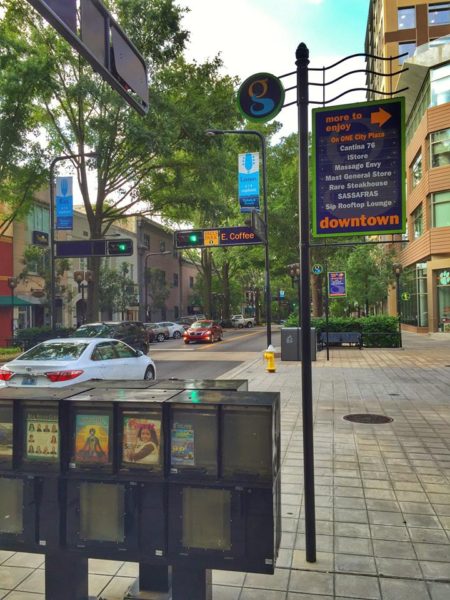
2. Create Public Spaces Where People Want To Be.
It is difficult to believe, but the most visited tourist attraction in Greenville today was entirely ignored for most of Greenville’s modern history. It wasn’t until the late 1990s that city leaders (led by Mayor White, then in his second term) decided to “free” a 60-foot natural waterfall in the heart of downtown that had been completely obscured by a state-owned, federally funded bridge. At the time, the proposal to tear down the bridge and create a park surrounding (and embracing) the waterfall was extremely controversial, particularly when taxpayers learned of a $13 million price tag associated therewith. But Mayor White and the city council pushed forward with their plans, and the bridge came down. And a wonderful park was created which included a pedestrian suspension bridge providing terrific views of the waterfall. To walk on this bridge today is to ask the question: How could anyone have ever thought obscuring this waterfall was a good idea? But obscure it they had, to their own detriment, and, of course, now to Mayor White’s credit. As we discussed his signature project, he was quick to point out to me that within one year of the city’s $13 million investment in Falls Park, $100 million in private investment in the immediately surrounding area ensued. That’s a rather good return on a public investment, and it’s reflective of the approach Greenville has taken to public spaces generally. One of Mayor White’s predecessors said that “the physical environment should be designed and programmed to encourage its use and reinforce a sense of place with a focus always on people.” And in Greenville they take these words very seriously, having created multiple venues throughout the city that invite tourists and residents alike. Not surprisingly, these public spaces are surrounded by private development.

Mayor White told us that he was visited several years ago by a team of city officials from Knoxville, Tennessee, who had come to Greenville to “find their waterfall.” We knew immediately what that meant, and after the meeting with the mayor, Mr. Dougherty and I talked at length about the possibility that Wheeling too was sitting on an untapped or underappreciated resource that could become a rewarding public space and economic driver. I have maintained for several years now (far before entertaining plans to run for mayor) that Wheeling Creek is underutilized to our collective detriment. Is Wheeling Creek our “waterfall”? Only time will tell, but the lesson of Greenville is that public investment in places that people want to experience can lead to economic development.
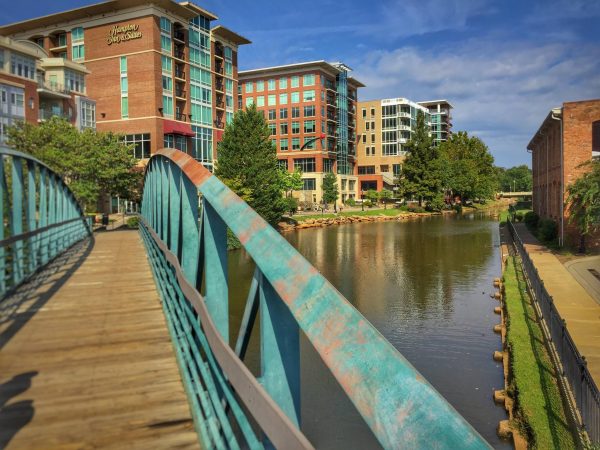
3. Public-Private Partnerships Are Critical.
During our meetings with the mayor and other city officials, the phrase “public-private partnership” was employed countless times. It rolls off their lips effortlessly because they’ve used it time and time again to describe their approach to economic development. When Greenville’s downtown was struggling several decades ago, private developers were reluctant to take risks. City officials concluded that their role was to be a catalyst in incentivizing private development where the free market itself was failing. They demonstrated a willingness to invest in infrastructure, streetscapes, and parking to assist developers with their projects. They used tax increment financing (TIF) districts creatively to spur development of “nodes” (or anchors) to bridge together portions of downtown that were not adequately connected. They used a façade grant program to incentivize private investment in the physical appearance of downtown buildings. They provided landscaping assistance to private development where necessary. And they worked to change a culture in the city’s building-enforcement department that, in the words of Nancy Whitworth, had a reputation for giving “quick No’s” to developers instead of helping them “get to Yes.” Ms. Whitworth also said something that I had noted during my own campaign here in Wheeling: That it is far easier to help a local business grow into a large business than it is to lure an existing large business to your city.
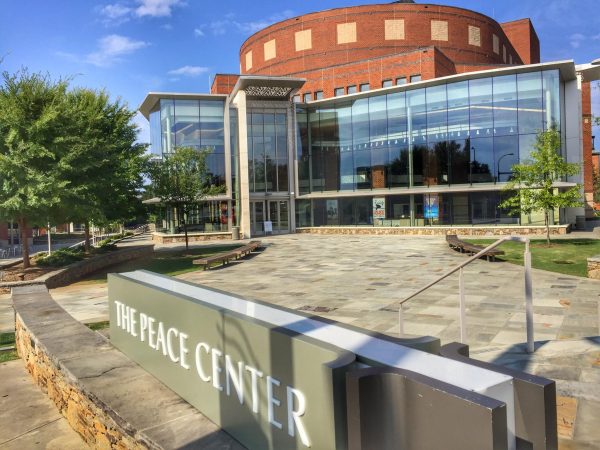
Greenville is not unique in utilizing public-private partnerships, and, indeed, Wheeling has had some terrific successes employing them as well (none perhaps more celebrated than the public-private partnership that saved the Capitol Theatre). But the lesson of Greenville is that there are tremendous benefits to be realized when a city works with its private and non-profit partners towards shared goals. As Ms. Whitworth put it, “it’s OK if developers make money”, and it’s even better if they do so while advancing agreed-upon city goals. Here in Wheeling, with existing budgetary constraints and some staggering infrastructure needs facing us, the need for public-private partnerships is higher than ever.
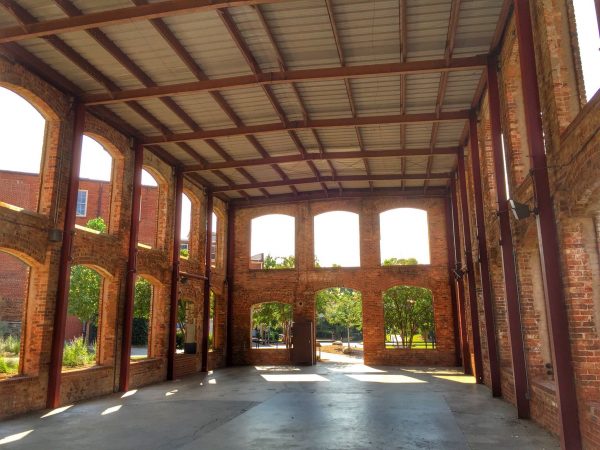
4. Mixed-Use Development With Residential Housing Is Critical.
One noticeable difference between the downtowns of Greenville and Wheeling is what happens after 5:00 p.m. Unless there is an event going on at WesBanco Arena, the Capitol Theatre, or Heritage Port, downtown Wheeling can be a rather lonely place at night. That’s not the case in Greenville, in large part because they’ve made mixed-use development (typically retail first floor with residential above) the norm for decades. As Mayor White put it, “everything we do these days is mixed use.” As a result, there are enough people working in downtown Greenville during the day and enough people living there at night to drive a vibrant economy of boutiques, art galleries, restaurants, bookstores, and even a Cabelas-like outdoor department store (called Mast). And this, in turn, leads to a Main Street experience that is active and alive from dawn to dusk and well beyond. Now, to be sure, Greenville is not the only city encouraging downtown living (our neighbor Pittsburgh has been focusing on this for the past decade), but it has done so very strategically. It has worked with private developers to place city-owned parking lots on the insides of blocks to be surrounded by first-floor retail and upper-floor residential developments. And it has worked carefully to balance the interaction of residential living with commercial traffic. We need to be mindful of the same here in Wheeling, particularly now as the Boury Lofts (and hopefully other residential developments) are set to come online in the near future.

In closing, let me state for a second time that I do not see Greenville as the solution to all of Wheeling’s challenges and problems. It is but one successful city amidst a nation of many successful cities that has figured out how to thrive amidst regional economic and industrial decline. But as I maintained throughout my yearlong campaign for this office, it is imperative that Wheeling’s city leaders look outside the 26003 ZIP Code from time to time to find guidance and inspiration as they seek to improve and reshape the Friendly City. The lesson of Greenville for me is that while there is no fail-safe approach to revitalizing a city, there are ways to increase your odds of success with strategic planning, a focus on people, patience, and by fostering cooperation among public and private partners. Our future remains to be written, but I am confident in the people of Wheeling to work together to challenge the status quo and forge a more vibrant, thriving future. We begin this process in some respects with more advantages than Greenville officials had in the 1990s. We have a far superior stock of historic buildings to work with, and we have the Ohio River and Wheeling Creek to embrace (whereas Greenville’s main “river” is barely 30 feet across). And we just may discover one or more of our own waterfalls along our way.
Photos by Glenn Elliott


